Introduction
Getting approved for a loan with bad credit isn’t impossible but it does require a different approach. Traditional banks often stick to strict credit score minimums, leaving many borrowers without options. Fortunately, unsecured loans designed for bad credit have opened new doors for those rebuilding their financial footing.
Unlike secured loans, these don’t require collateral, no car, house, or savings account on the line. Instead, lenders look closely at your income stability, debt-to-income ratio (DTI), and recent payment history to decide whether you qualify.
That flexibility makes unsecured loans a lifeline for borrowers who need quick access to cash without risking personal property. But it also comes with trade-offs: higher interest rates, smaller loan limits, and stricter repayment expectations.
This guide breaks down how unsecured loans for bad credit work, which lenders are most forgiving, and how to improve your approval odds so you can borrow responsibly and confidently, even with a less-than-perfect score.
Key Takeaways
Unsecured Loans for Bad Credit: What to Know Before You Apply
- Unsecured loans don’t require collateral, but lenders base approval on creditworthiness and income.
- Borrowers with bad credit may face higher interest rates and stricter qualification criteria.
- Some lenders specialize in bad credit loans, offering flexible approval requirements.
- Alternatives like secured loans, credit unions, and peer-to-peer lending may provide better terms.
Disclaimer: This site contains affiliate links. If you make a purchase, we may earn a commission at no extra cost to you.
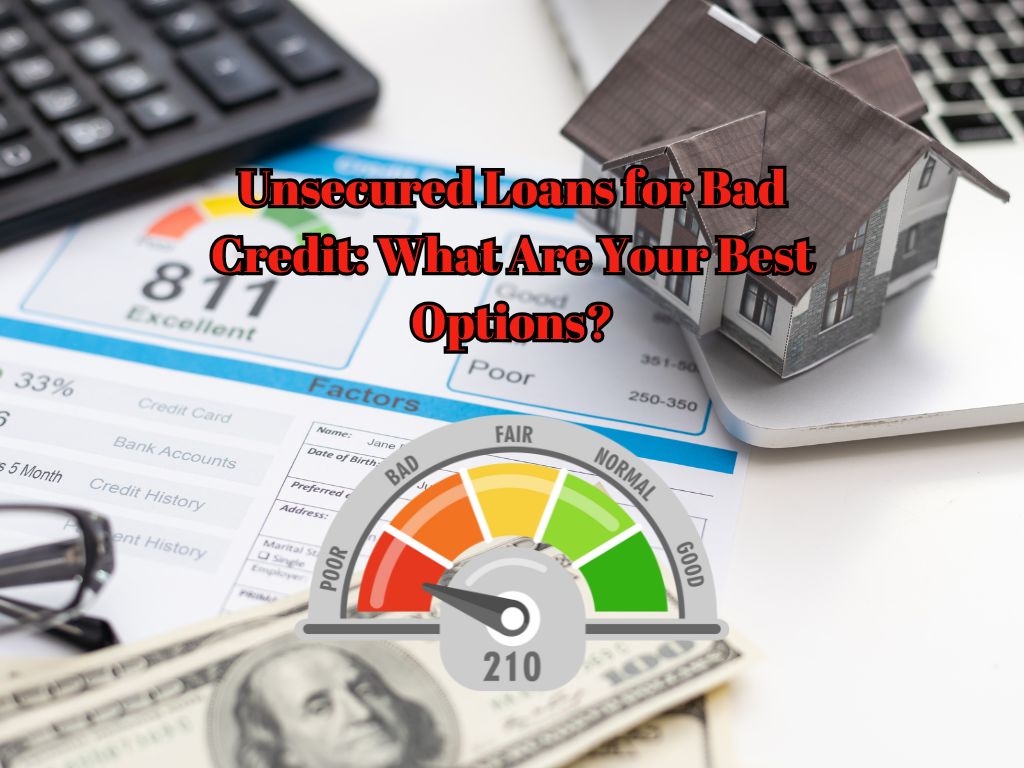
What You Need to Know About Unsecured Loans for Bad Credit
If your credit score isn’t where you’d like it to be, getting approved for a loan can feel discouraging but it doesn’t mean you’re out of options. Lenders have evolved, and so have the ways they assess borrowers.
Unsecured loans for bad credit don’t rely on collateral or perfect credit scores. Instead, approval now depends more on your overall financial profile: income consistency, debt-to-income ratio (DTI), and how you’ve handled your most recent debts. In short, lenders want to know whether you can realistically manage another payment, not just what your score says on paper.
That shift has opened new doors for borrowers who might have been denied just a few years ago. Many online lenders now use AI-driven underwriting systems that review alternative data such as cash-flow trends, rent or utility payments, and even employment stability to make fairer lending decisions.
Of course, the trade-off is that unsecured loans for bad credit usually come with higher rates and smaller loan limits. But used wisely, they can be a bridge helping you cover urgent expenses now while rebuilding your credit for better terms later.

📊 Snapshot: What to Expect When Borrowing with Bad Credit
| Factor | Typical Range / Reality | What It Means |
|---|---|---|
| Credit Score Range | 560–640 (subprime range) | Below-average credit, but still eligible for select lenders |
| Average APR | 18%–36% | Higher costs reflect lender risk |
| Loan Amounts | $1,000 – $20,000 | Proof of steady income can unlock higher limits |
| Funding Speed | 1–3 business days | Fintech lenders often fund faster than banks |
| Repayment Terms | 12–60 months | Shorter terms reduce total interest paid |
💡 Smart Takeaway: Think of these loans as a short-term solution, not a long-term habit. The goal isn’t just to borrow — it’s to borrow strategically while improving your credit so your next loan costs you less.
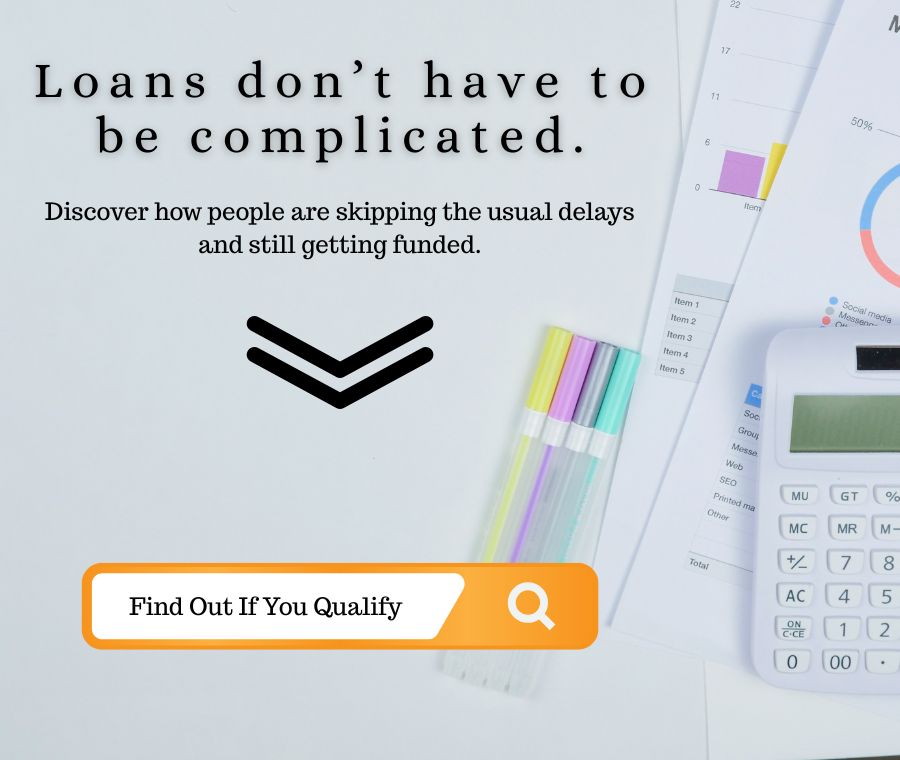
Best Lenders Offering Unsecured Loans for Bad Credit (2025)
Finding a lender that truly understands bad-credit borrowers can make all the difference. While most traditional banks still favor high-credit applicants, a growing number of online lenders and fintech platforms are reshaping the lending space offering faster approvals, fairer assessments, and options for people rebuilding their credit.
These lenders use flexible underwriting models that look beyond just your credit score. Some consider your income stability, job history, and even educational background before making a decision.
Here’s a closer look at the top unsecured loan providers for borrowers with less-than-perfect credit in 2025 and what makes each stand out.
🔝 Top Unsecured Loan Lenders for Bad Credit
| Lender | Credit Score Flexibility | Loan Amounts | What Makes Them Stand Out |
|---|---|---|---|
| Upgrade | 560+ accepted | $1,000 – $50,000 | Great for fair-credit borrowers looking for larger amounts. Simple online process with fast funding. |
| LendingClub | 600+ | $1,000 – $40,000 | Peer-to-peer lending model allows flexible funding even with mid-tier credit. Excellent for debt consolidation. |
| Upstart | 580+ (AI-driven) | $1,000 – $50,000 | Uses AI to evaluate non-traditional data (education, work history). Ideal for borrowers with thin or new credit. |
| Best Egg | 600+ | $2,000 – $50,000 | Focuses on borrowers with steady income and moderate credit. Transparent rates and flexible repayment terms. |
| OneMain Financial | No minimum score | $1,500 – $20,000 | Branch-based lender known for approving those turned down elsewhere. In-person service and fast approvals. |
How to Choose the Right Lender When You Have Bad Credit
Not all lenders treat credit challenges the same way so choosing the right one comes down to what you value most: speed, flexibility, or loan size.
- Need fast approval? → Upstart or OneMain are your best bets.
- Want higher loan limits? → Upgrade or Best Egg offer larger borrowing ranges.
- Have limited credit but strong income? → Upstart’s AI system can look beyond your score.
- Prefer in-person support? → OneMain’s local branches provide real human guidance.
Pro Tip: Always pre-qualify before applying. A soft credit check won’t affect your score and helps you compare rates across multiple lenders, a simple step that can save you hundreds in interest.
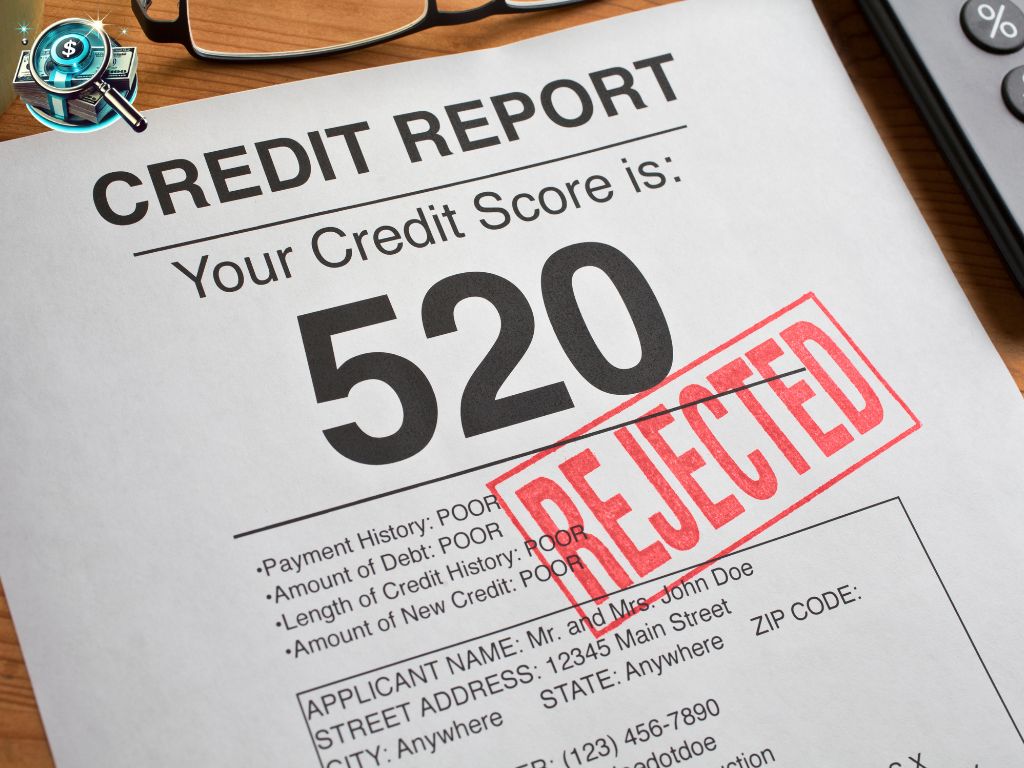
How to Improve Your Chances Before Applying
Having bad credit doesn’t automatically mean a loan denial but it does mean you’ll need to approach the application process more strategically.
Before you hit “apply,” a few simple steps can make the difference between getting approved or rejected, and even save you thousands in interest.
The key is to show lenders that you’re low-risk even if your credit score doesn’t say so yet.
⚙️ 5 Smart Ways to Boost Your Approval Odds (Fast)
| Step | What to Do | Why It Matters | Timeframe |
|---|---|---|---|
| 1. Check Your Credit Report for Errors | Visit AnnualCreditReport.com for your free report from all 3 bureaus. Dispute anything inaccurate. | Even one wrong late payment can drop your score by 50+ points. | 1–2 weeks |
| 2. Pay Down Small Balances | Target credit cards or loans with balances under 30% of your limit. | Lowers your utilization ratio and improves your DTI score. | 2–4 weeks |
| 3. Avoid Multiple Loan Applications | Limit your hard credit pulls too many can signal “credit desperation.” | Lenders see multiple inquiries as a red flag. | Immediately |
| 4. Add a Co-Signer (If Possible) | Partner with someone who has strong credit and steady income. | Lowers your risk profile and unlocks better APRs. | Same day |
| 5. Show Proof of Consistent Income | Prepare pay stubs, tax returns, or bank statements in advance. | Stability can outweigh a weak credit score with many lenders. | Same day |
💡 Quick Insight: Even a modest credit score improvement say, from 580 to 610 can shift you into a better tier and reduce your loan APR by 3–5%. On a $10,000 loan, that’s potentially hundreds saved in interest.
Bonus Tip: Borrow Small, Build Fast
If your credit is in recovery mode, start small. A modest loan ($1,000–$3,000) is easier to get approved for and helps you establish a track record of on-time payments.
Think of it as a credit-building strategy, not just a quick cash fix. Once you’ve proven reliability for six to twelve months, refinancing or applying for a larger loan becomes much easier and significantly cheaper.
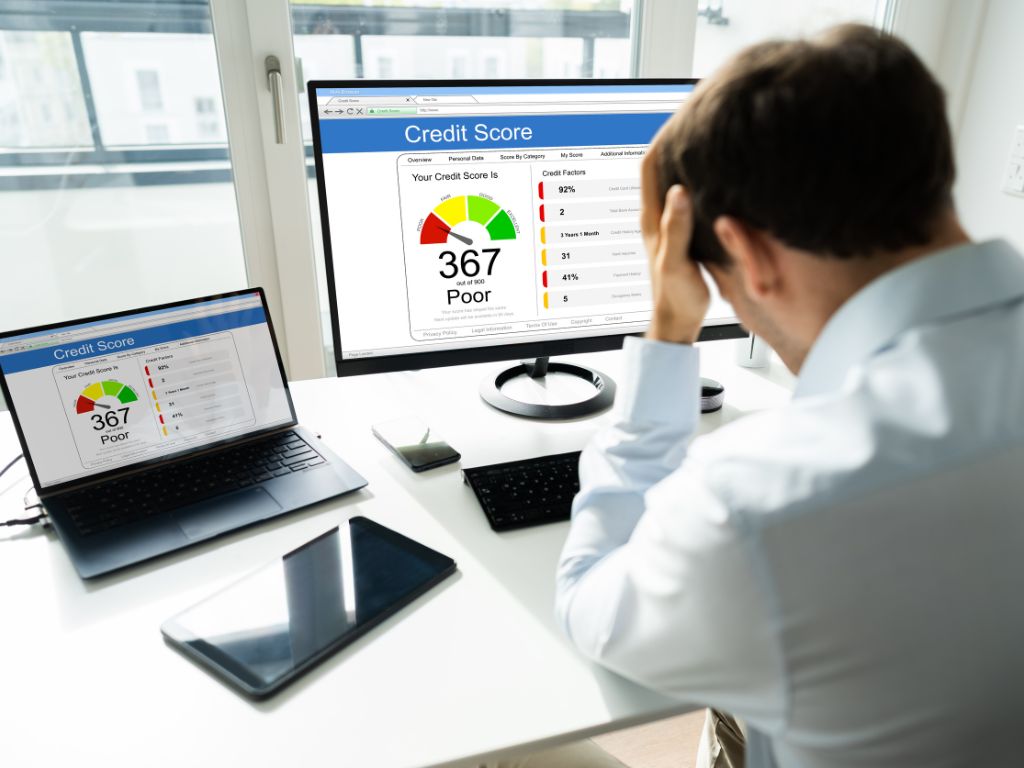
How to Qualify for an Unsecured Loan with Bad Credit
Once you’ve tightened up your finances and reviewed your credit report, it’s time to focus on what really matters during the loan application itself: the factors lenders use to decide whether to approve you.
Even with a low credit score, you can qualify for an unsecured loan if you understand how lenders think and structure your application to match their priorities.
🏦 What Lenders Look For (and How to Strengthen Each Factor)
| Factor | Why It Matters | How to Improve It Before Applying |
|---|---|---|
| Credit Score | It’s still the starting point for risk assessment but not the only one. | Keep credit use under 30% of your limits, avoid new hard inquiries, and dispute any errors. |
| Debt-to-Income (DTI) Ratio | Measures how much of your income goes toward debt payments lenders prefer under 40%. | Pay off small balances or refinance existing debt to lower your DTI before applying. |
| Income Stability | A steady income shows you can handle new debt, even with lower credit. | Provide consistent documentation (pay stubs, 1099s, or bank deposits). |
| Payment History | One of the biggest predictors of future behavior recent late payments hurt the most. | Set up autopay on existing debts to avoid late marks during your application period. |
| Loan Purpose | Lenders assess why you’re borrowing; responsible reasons matter. | Be specific and practical (e.g., “debt consolidation” or “medical bills” instead of “personal use”). |
💡 Smart Tip: Be ready to tell your story briefly — especially if your credit report has old delinquencies or collections. Many lenders, especially fintechs, value context. A short written note explaining improvements in your finances can sometimes tip the scales in your favor.
Practical Steps to Strengthen Your Application
- Prequalify with Multiple Lenders: Look for lenders that offer soft-credit prequalification. This allows you to compare real rates without lowering your score.
- Keep Borrowing Amounts Modest: Smaller loan requests are easier to approve and often come with better rates. Start with what you need, not the maximum available.
- Highlight Income Consistency: If you’re self-employed or a gig worker, include at least three months of bank statements showing regular deposits.
- Add a Co-Signer if Possible: A trusted co-signer with good credit can not only increase approval chances but also lower your rate by several percentage points.

📊 Typical Qualification Snapshot (2025)
| Credit Tier | Estimated APR Range | Typical Loan Limit | Approval Likelihood |
|---|---|---|---|
| Excellent (720+) | 6%–12% | Up to $100,000 | Very High |
| Good (680–719) | 10%–18% | Up to $75,000 | High |
| Fair (640–679) | 15%–25% | Up to $40,000 | Moderate |
| Poor (560–639) | 25%–36% | $1,000–$20,000 | Select lenders only |
Bottom Line: Qualifying for an unsecured loan with bad credit isn’t about luck, it’s about strategy.
Show lenders you’re reliable today, even if your past credit wasn’t perfect. Combine financial stability, proof of income, and transparent intent, and you’ll stand out among other subprime applicants.
A strong application tells a story: that you’ve learned from the past and have the consistency to repay what you borrow.
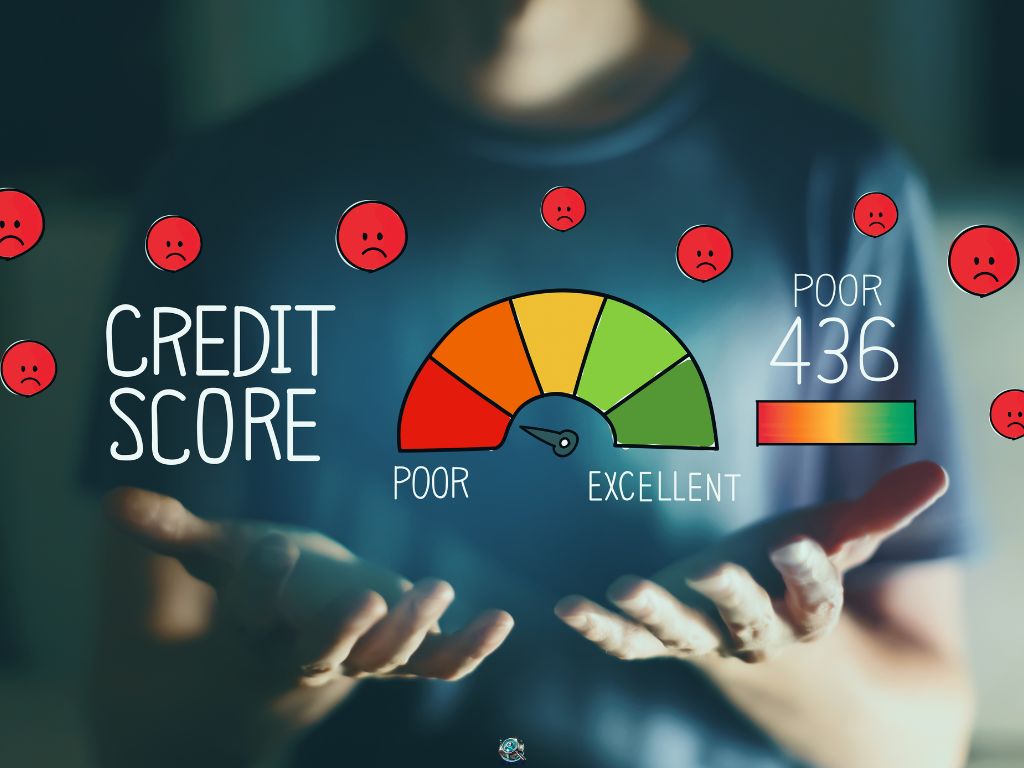
Alternative Loan Options for Bad Credit Borrowers
If you’ve been turned down for an unsecured loan or quoted sky-high interest rates, don’t panic, you still have options. The goal isn’t just to get any loan, but to find one that fits your financial reality without making things worse.
Some of the best alternatives are designed specifically for borrowers with imperfect credit. These options often trade collateral, membership, or community-based lending for lower risk and better approval odds.
♻️ Top Alternatives Worth Considering
| Loan Type | Best For | Why It’s a Smart Option | Key Drawback |
|---|---|---|---|
| Secured Personal Loan | Borrowers who own a car, savings, or certificate of deposit (CD) | Easier approval and lower APRs, since collateral reduces lender risk. | Risk of losing the asset if you default. |
| Credit Union Loan | Members or potential members with low credit | Local credit unions often use manual underwriting and offer lower rates. | Membership may take time or require eligibility. |
| Peer-to-Peer (P2P) Loan | Borrowers overlooked by traditional lenders | Funded by individual investors, allowing more flexible risk tolerance. | Funding can take longer and rates vary widely. |
| Payday Alternative Loan (PAL) | Small emergency needs ($200–$1,000) | Offered by credit unions; APR capped at 28% — far safer than payday loans. | Short repayment window (1–6 months). |
| Co-Signed Loan | Borrowers with supportive friends or family | The co-signer’s credit improves your approval odds and loan terms. | Co-signer is equally responsible for repayment. |
When to Consider an Alternative Instead of an Unsecured Loan
- You’ve been denied by multiple online lenders or only qualify for APRs above 30%.
- You own assets (like a car, CD, or savings account) and are comfortable using them as collateral.
- You qualify for a credit union membership and prefer personalized underwriting.
- You only need a small, short-term loan and can repay quickly.
💡 Expert Tip: Credit unions are one of the most overlooked options for bad-credit borrowers. Many offer Payday Alternative Loans (PALs) that are federally regulated meaning low fees, fair interest, and clear terms. These can help you rebuild credit while keeping costs manageable.

⚠️ Avoid High-Risk “Alternatives”
Be cautious of loan products that promise instant approval or no credit checks. These often include payday, title, or installment loans with triple-digit APRs. They may solve today’s problem but create a much bigger one next month.
| Red Flag | What It Means | Better Choice |
|---|---|---|
| “Guaranteed approval” ads | No legitimate lender guarantees a loan without checking credit or income. | Prequalify with reputable lenders instead. |
| Advance-fee requests | Asking for money before approval is a scam. | Legit lenders deduct fees after funding. |
| Payday or title loans | Extremely high APR (300%–600%) and short terms. | Credit union PALs or small secured loans. |
Bottom Line: If unsecured personal loans feel out of reach, don’t settle for predatory alternatives. Look for lenders that reward responsibility not perfection.
Secured loans, PALs, or credit union products can serve as smart stepping stones. Use them to build trust with lenders, improve your credit score, and position yourself for lower-cost borrowing in the future.
Borrowing with bad credit isn’t about finding shortcuts, it’s about finding safe, sustainable pathways toward financial stability.
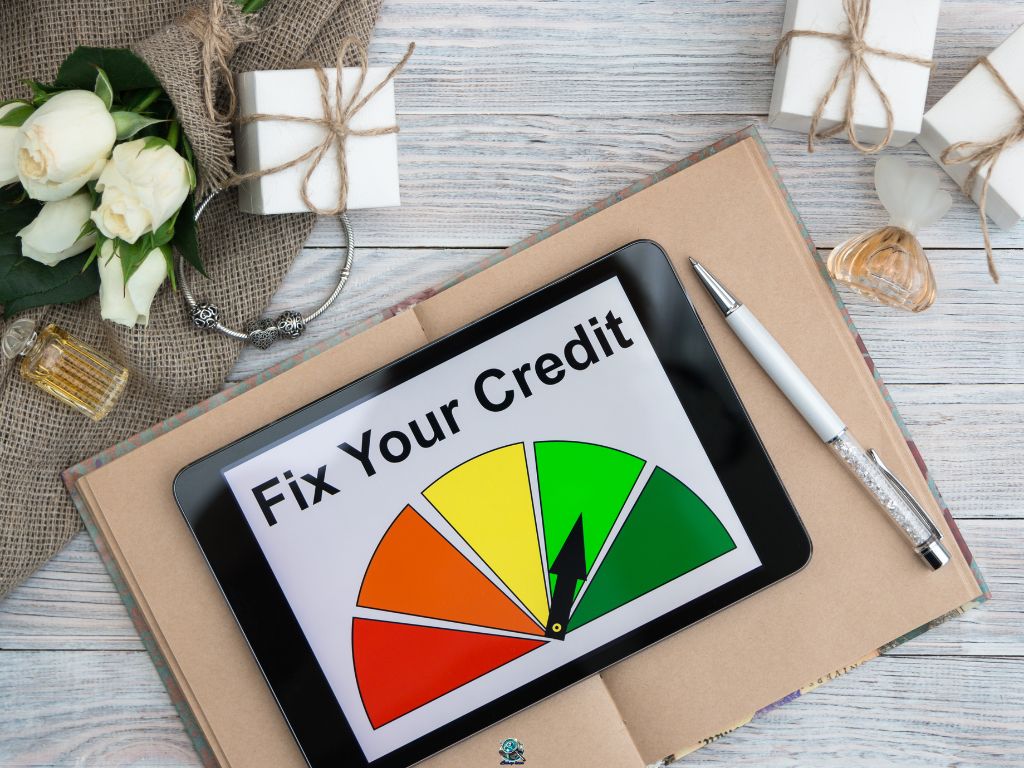
Common Scams & Predatory Loans to Watch Out For
When your credit score is low, every “fast approval” ad can look like a lifeline. But many of these offers are traps designed to take advantage of urgency, not help you recover financially.
The good news? Once you know the red flags, spotting a predatory lender becomes easy.
🚨 Top Warning Signs of Loan Scams
| Red Flag | How It Works | Why It’s Dangerous | Safer Alternative |
|---|---|---|---|
| “No Credit Check” or “Guaranteed Approval” Offers | Lenders claim credit doesn’t matter. | Legitimate lenders always assess credit or income. No checks = sky-high APR (200%+). | Look for fintech or credit union lenders that use soft-check prequalification. |
| Advance-Fee Scams | You’re asked to pay upfront for “processing” or “insurance.” | Real lenders never require money before funding your loan. | Work only with lenders that deduct fees after disbursement. |
| Payday or Title Loans | Promise fast cash using your paycheck or car title as collateral. | Typically 300%–600% APR — one missed payment can cause a debt spiral or car loss. | Consider Payday Alternative Loans (PALs) or small secured credit-union loans. |
| “Act Now” or Pressure Tactics | Aggressive sales language or limited-time “approval” windows. | Scammers exploit urgency — rushing prevents you from reading the fine print. | Take time to compare at least three legitimate offers before deciding. |
| Unverifiable Lenders | No physical address, no state license, vague contact info. | If you can’t verify them on your state’s financial regulator site, don’t proceed. | Check the lender’s NMLS number or BBB rating before applying. |
How to Verify a Legitimate Lender
Before sharing any personal information, take these simple steps:
- Check Registration: Visit your state’s Department of Financial Regulation or use the NMLS Consumer Access database to confirm the lender’s license.
- Read Independent Reviews: Look up verified customer reviews on sites like Trustpilot or the Better Business Bureau (BBB). Repeated complaints about “extra fees” or “missing payments” are major red flags.
- Inspect the Website: Secure websites start with “https://” and display verifiable contact details (not just a form or email).
- Avoid Upfront Payments: No legitimate lender will demand money before funding your loan. Origination fees, if any, are taken from the loan amount after approval.
- Trust Your Instincts: If an offer sounds too easy or too urgent, it probably is. Responsible lending always involves documentation and a short review process.
💡 Smart Borrower Tip
Predatory lenders rely on panic. The more confident and informed you are, the less vulnerable you become. Take an extra 24 hours to compare, verify, and read disclosures. A legitimate lender won’t pressure you, they’ll encourage you to understand the terms first.
Bottom Line: Scams and predatory lenders target borrowers with bad credit because they assume you’re desperate. Don’t prove them right, prove them wrong by being cautious, informed, and deliberate.
If you ever feel unsure, step back, research the lender, and reach out to your state regulator or credit union for verification. The right loan should solve your problem, not create a new one.
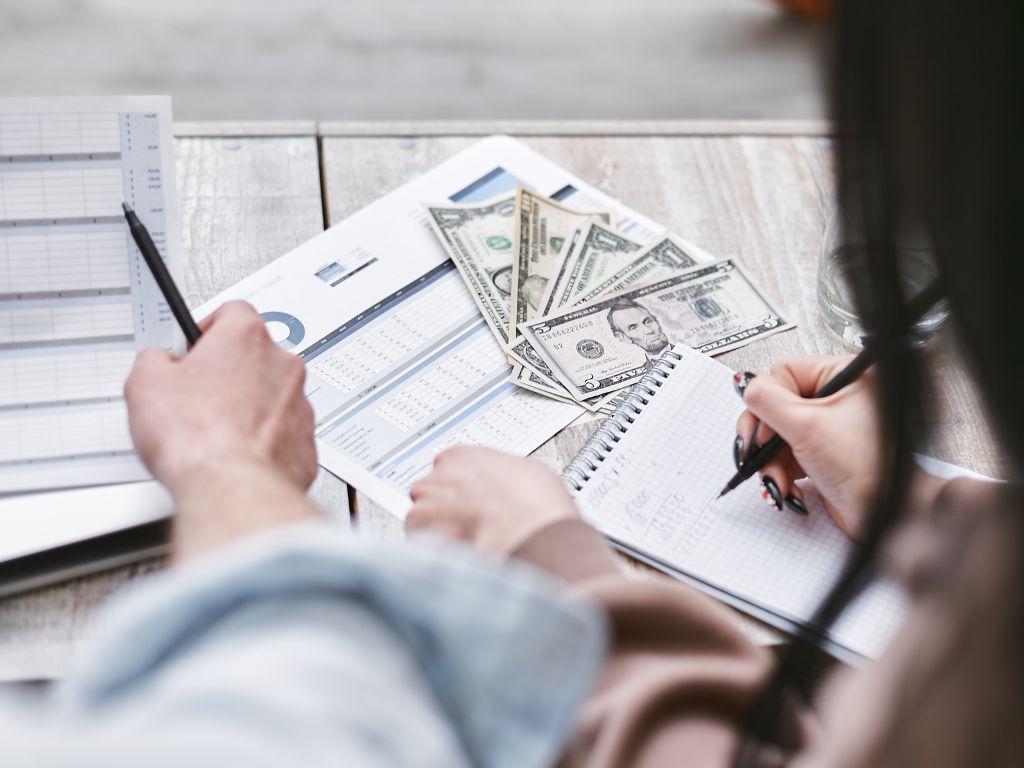
Best Uses of Unsecured Loans for Bad Credit
If you’re borrowing with bad credit, the key isn’t just getting approved, it’s using the loan wisely.
Unsecured loans can help you stabilize your finances, build credit, and move forward, but only if the money goes toward goals that improve your long-term financial health.
Used incorrectly, they can trap you in another cycle of debt.
💡 When Unsecured Loans Make Sense
| Purpose | Why It’s a Smart Use | What to Watch Out For |
|---|---|---|
| Debt Consolidation | Replaces multiple high-interest debts with one fixed-rate payment, simplifying your finances and potentially lowering costs. | Make sure you don’t run up new credit card debt after consolidating. |
| Emergency Medical Expenses | Covers urgent healthcare needs that can’t be delayed, protecting your health and credit from unpaid bills. | Avoid borrowing more than you absolutely need — medical providers sometimes offer no-interest plans. |
| Essential Car Repairs | Keeps you working or commuting, which directly supports income stability. | Confirm the repair is essential; unnecessary add-ons can inflate costs. |
| Rent or Utility Bills | Prevents eviction or service shutoffs during short-term hardship. | Only borrow if you have a realistic repayment plan for the next few months. |
| Job Training or Education | Improves earning potential and strengthens long-term creditworthiness. | Ensure the course or certification leads to measurable income gains. |

⚠️ When an Unsecured Loan Is a Bad Idea
| Purpose | Why It’s Risky |
|---|---|
| Vacations or Luxury Purchases | High-interest debt for non-essentials adds long-term cost with zero financial return. |
| Gambling or Investments | Using borrowed money for risky bets or markets can double your losses. |
| Covering Ongoing Budget Gaps | Using loans as income replacements leads to dependency and eventual default. |
| Buying Non-Essential Tech or Goods | The value of the purchase often drops faster than the loan balance. |
💡 Smart Rule: If the loan doesn’t save you money or help you earn money — think twice before taking it.
How to Use Bad-Credit Loans Strategically
- Borrow Only What You Need: A smaller loan is easier to repay and can help you rebuild credit faster. Avoid the temptation to take the maximum amount offered.
- Set a Repayment Goal Before Borrowing: Decide how you’ll repay before you apply. Build it into your budget as a non-negotiable expense.
- Combine Borrowing with Credit Building: Consider using the loan alongside tools like secured credit cards or credit-builder loans to strengthen your credit mix.
- Track Progress: Use free credit monitoring tools to watch your score improve with consistent payments. This creates momentum and motivation.
Bottom Line: Unsecured loans for bad credit aren’t meant for splurges; they’re meant for stability. Use them to consolidate, recover, or rebuild not to escape.
If each dollar borrowed helps you save money, protect income, or increase future earnings, you’re borrowing strategically. That’s how an unsecured loan becomes not a setback, but a stepping stone toward stronger credit and financial freedom.

Conclusion: Choosing the Right Unsecured Loan for Bad Credit
Getting approved for an unsecured loan with bad credit isn’t easy but it’s far from impossible. The key isn’t finding any lender who’ll say yes; it’s finding the right one who offers fair terms, transparent pricing, and a chance to rebuild your financial standing.
Before you apply, take a moment to step back and assess the big picture.
Ask yourself three simple questions:
- Can I afford the monthly payments without stretching my budget?
- Will this loan improve my financial position, not just patch a short-term problem?
- Have I compared multiple legitimate lenders (including credit unions or fintech options)?
If the answer to all three is yes, you’re ready to move forward confidently.
Borrowing with bad credit requires patience, preparation, and perspective but with the right strategy, it can also be the first step toward financial recovery.
💡 Pro Tip: Start small, repay consistently, and monitor your progress. Each on-time payment helps rebuild your credit profile and unlocks access to better loan offers down the road.
If you’re still unsure which option fits your situation, take a look at our Unsecured Loans Guide for 2025, it explains how these loans work, how lenders evaluate borrowers, and how to borrow smarter, not harder.
Remember: rebuilding credit isn’t about chasing quick fixes; it’s about making small, steady financial moves that lead to big results.
The right unsecured loan can help you bridge the gap but smart borrowing will help you close it for good.
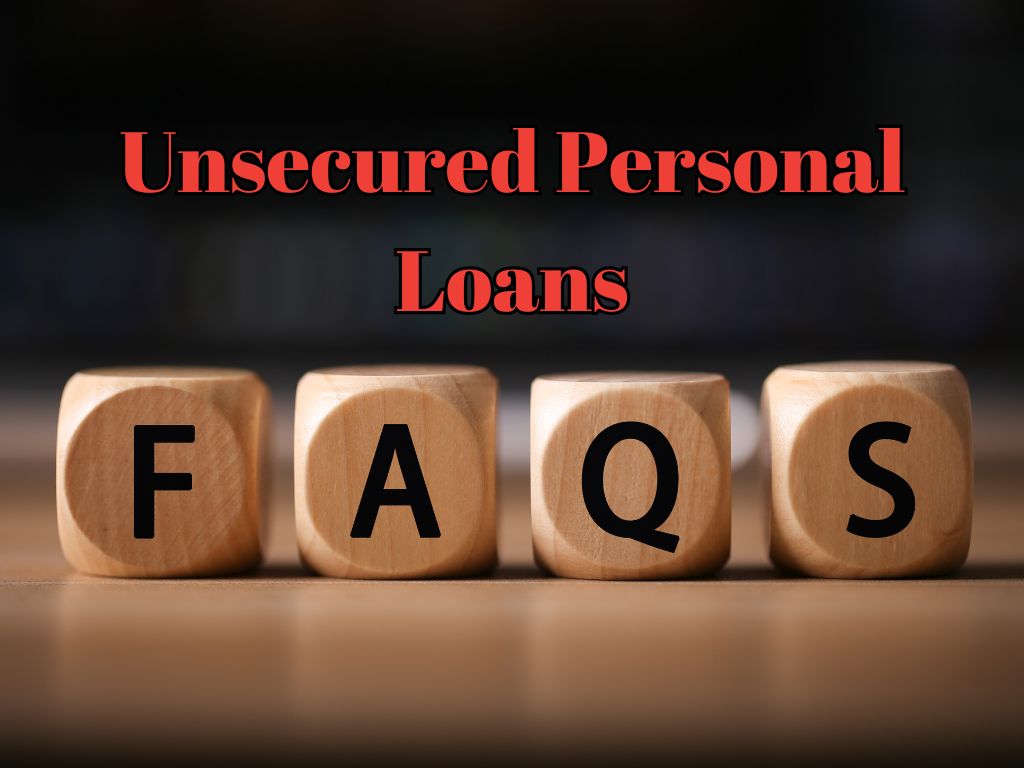
FAQs About Unsecured Loans for Bad Credit
1. Can I really get an unsecured loan with bad credit?
Yes though it takes strategy, not luck. Many online lenders and credit unions offer unsecured loans to borrowers with scores as low as 560, especially if you have steady income or a co-signer. The trade-off is usually a higher APR, but responsible repayment can help rebuild your credit over time.
2. What’s the minimum credit score I need?
Most lenders look for at least 560–600, but credit score alone isn’t everything. Platforms like Upstart and OneMain Financial also weigh employment stability, income, and payment history, not just your FICO number.
3. How much can I borrow with bad credit?
Typically between $1,000 and $20,000. Borrowers with stronger income or co-signers may qualify for higher amounts, but borrowing only what you need improves approval odds and lowers overall risk.
4. Will taking out an unsecured loan hurt my credit?
There’s usually a small, temporary dip from the hard credit inquiry during application. However, making consistent, on-time payments can help your score recover and grow over time. Missed payments, on the other hand, can cause long-term damage.
5. How fast can I get approved and funded?
It depends on the lender:
- Online lenders (like Upgrade or Upstart) can fund as soon as the next business day.
- Credit unions or banks may take 2–7 days, depending on verification.
💡 Pro Tip: Prequalify first using a soft credit check to preview your rates without affecting your score.
6. Are payday or title loans ever worth it?
Almost never. These are high-cost, short-term loans with 300%–600% APR and high default risk. Even one missed payment can spiral into long-term debt. For emergencies, look into Payday Alternative Loans (PALs) through credit unions; they’re safer and capped at much lower rates.
7. Can a co-signer really help me get approved?
Absolutely. A trusted co-signer with strong credit can significantly reduce your interest rate and increase approval odds. Just remember your co-signer is equally responsible for repayment, so communication and trust are essential.
8. What’s the smartest way to use an unsecured loan with bad credit?
Use it to save or earn money, not spend impulsively. Smart uses include debt consolidation, emergency repairs, or medical expenses. Avoid borrowing for non-essential spending that often worsens financial stress.
9. Can I refinance or consolidate debt with bad credit?
Yes and it’s often one of the most effective ways to use an unsecured loan. Consolidating high-interest debts into one fixed payment can simplify budgeting and reduce total interest costs. Just avoid accumulating new debt afterward.
10. Are online lenders safe to use?
Yes, as long as they’re licensed and transparent. Stick to reputable lenders like SoFi, Upgrade, Upstart, or LightStream, and always verify them through the NMLS Consumer Access Database. Avoid any company that offers “guaranteed approval” or asks for upfront fees before funding.
0 Comments